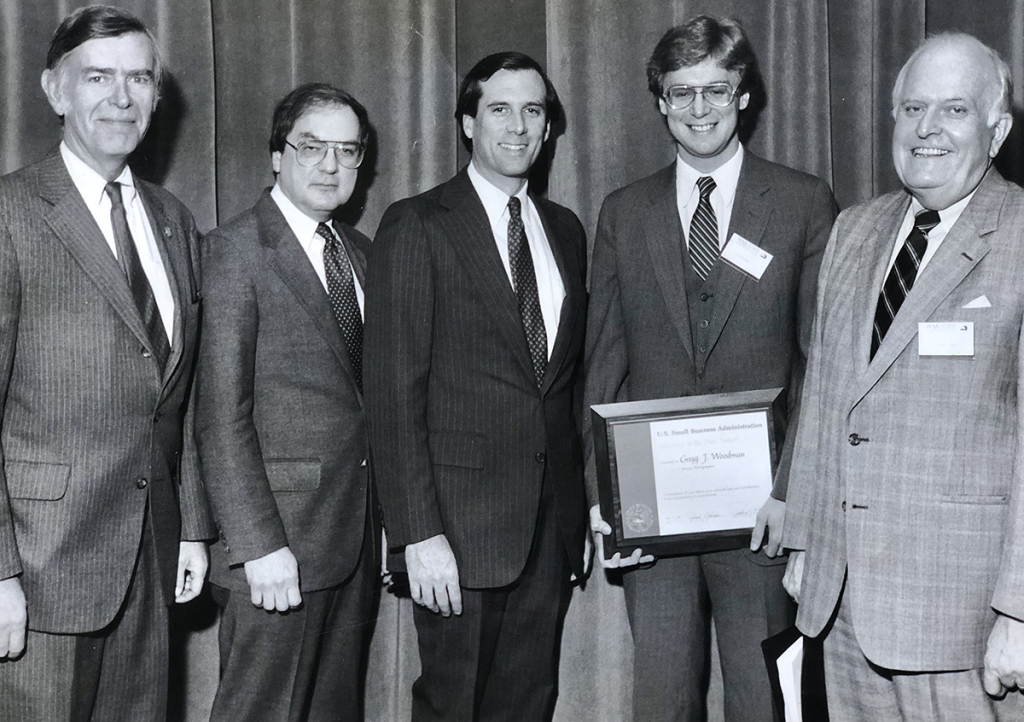
By Greg Woodman
I’ve always had a passion for being a champion of Happy Valley, from founding HappyValley Promotions in the 1980s to now, delivering the latest issue of HappyValley Industry Catalyst.
HappyValley Industry’s mission is to accentuate the overwhelming benefits of this place where we live and work. Our goal is not only to shine a spotlight on positive progress, but also to highlight the local services and suppliers whose solutions are working behind the scenes to make it happen. Why am I so passionate about marketing these local businesses that I have been willing to do it for free in my own publication?
Here’s why: misconceptions about marketing are inhibiting the potential of many local businesses. They believe marketing is about advertising or selling. This limited view can lead to missed opportunities and even business decline.
I’ve counted four big misconceptions that are impeding many growth for many businesses.
#1: Marketing is just promotion
Many companies reduce marketing to just Promotion — running ads, creating social media content or sending out PR. While important, these are just the tip of the iceberg. Marketing is about aligning Product, Price, Place, and Promotion.
At Airwalk Footwear, where I was part of the team that drove 10x growth, the key was not just cool ads. It was understanding the skaters’ lifestyle (Product), pricing our shoes to compete in both niche and mainstream markets (Price) and expanding our distribution beyond skate shops (Place).
The Promotion worked because it was part of a strategy where all four Ps were aligned. This integrated approach was what allowed Airwalk to grow faster than competitors like Vans and Skechers at the time.
#2: Efficiency is more important than effectiveness
Many companies, especially those who run with a product-first mindset, often shift over time to focus on efficiency rather than effectiveness. This is where things go wrong. Companies that prioritize efficiency over effectiveness often lose their customer obsession — one of the key principles that companies like Amazon are built on.
Marketing, when done right, ensures that you are both effective and efficient. When companies focus too much on making operations more efficient and forget about customer insights, they miss the chance to innovate and grow. That is when the balance is lost. If one of the four Ps — let us say Product or Price — is not aligned with what the customer wants, it is like driving on a flat tire. The other Ps will not save you.
At Salvage Direct, where we scaled from startup to a $29 million sale, we did not rely solely on promoting our service. We revolutionized how customers bought salvaged vehicles online (Place), set pricing that matched both buyers and sellers, and built a product that solved real problems in the marketplace. Promotion only came after we had aligned across the board. This is what led to our exponential growth, not a flashy logo or a viral campaign.
#3: Companies can be successful without customer obsession
Amazon is a perfect example of how marketing, when done right, ensures you remain both customer-obsessed and operationally efficient. In Amazon’s model, marketing has a seat at the strategy table. They use customer data to drive decisions around Product (what to offer), Price (what is the sweet spot), Place (how to deliver), and finally, Promotion (how to communicate that value).
Most businesses in Central PA that I have worked with silo marketing to just Promotion. The result? Innovation stalls, effectiveness decreases, and efficiency becomes a hollow metric. When marketing is isolated, you lose the ability to truly understand your customer and the power to drive company-wide decisions.
When marketing’s influence on Product, Price and Place is lost, one P starts crushing the others, and that is when the business falters. It is like ignoring early symptoms of cancer — by the time the problem shows up in your metrics, it is often too late to reverse.
#4: Marketing doesn’t need all 4 Ps
In every major success I have been part of — whether it was Airwalk, Salvage Direct or various capital campaigns that raised millions — the same formula held true: Marketing worked because it was aligned with all four Ps.
At the State College Area School District Educational Foundation, a concept that we were a part of the startup of a new non-profit, the approach was not just about promoting a cause. The team built a product (mission) that resonated with donors, set accessible ways to contribute (place), and ensured that pricing (donation levels) aligned with what our community could afford. Once that strategy was nailed then story and promotion began. This led to $3 million raised from scratch. Alignment of all Ps is what enabled this, not just clever promotions.
Why I Created HappyValleyIndustry.com
All of this leads into why I created HappyValley Industry. I see something extraordinary in this region — potential far beyond what I encountered even with a company like Airwalk. Central Pennsylvania has everything it needs to thrive, but there is one thing missing: Marketing.
Not marketing in the way most people think — ads, logos, social media posts. I am talking about true marketing, where the 4 Ps — Product, Price, Place and Promotion — are aligned. Only when these elements are working in harmony can real, sustainable growth happen. Once aligned, then we can promote — using all the tactics that people often mistake as the entirety of marketing.
I want to be part of aligning those 4 Ps for the businesses here in the region. I want to see them grow, just like I helped grow Airwalk and other companies with which I have been involved.
We have all read the economic growth report that outlines where the region could go. It is an informative read and validated for me my investment in a website and 52 eletters and three print publications named “Catalyst” tied to the same goal of the report: GROWTH. I have read these kinds of reports at Airwalk and with many nonprofits and companies I have worked with hire us to do such reports. We call them Integrated Marketing Audits. But reading and even paying for reports does not create growth — alignment and action do. The report validated the need for alignment, leadership and action. Count HappyValley Industry and my team in.
HappyValleyIndustry.com was built as a marketing concept and platform with one goal — growth for the region via growth of the businesses in the region. The mission is to help guide local businesses to understand that the 4th P — Promotion — on its own is worthless. It is only when Product, Price and Place are also aligned that promotion becomes powerful.
Let’s talk.
If you are seeking growth for your business or nonprofit, I would love to chat. I believe that if you feel like your company is not hitting its full potential, it is because one of the Ps is out of alignment — and I would be happy to help you figure out which one.
Reach out, and let us discuss how Affinity Connection, a true marketing company — not just a promotion company — and our 4th P tactical promotion e-letter and website, HappyValleyIndustry.com, can support your growth goals. Let us make sure all four tires are pumped up and aligned for 10x growth!
814-237-0481 ext. 131






